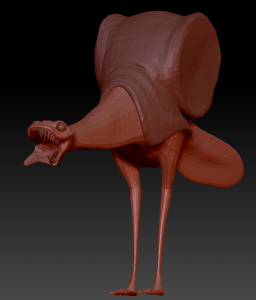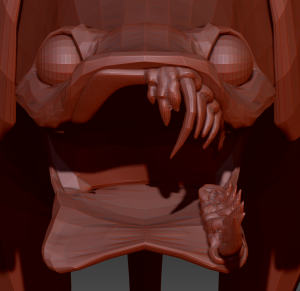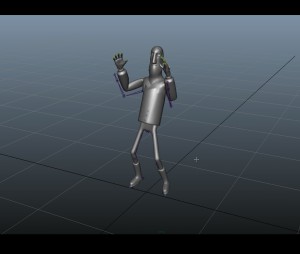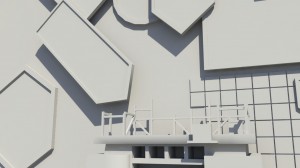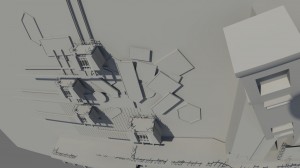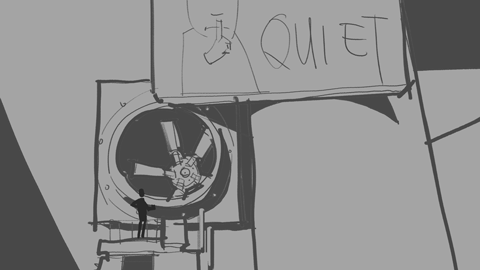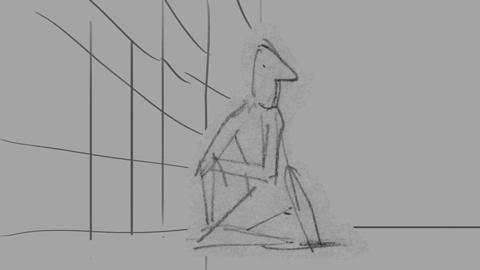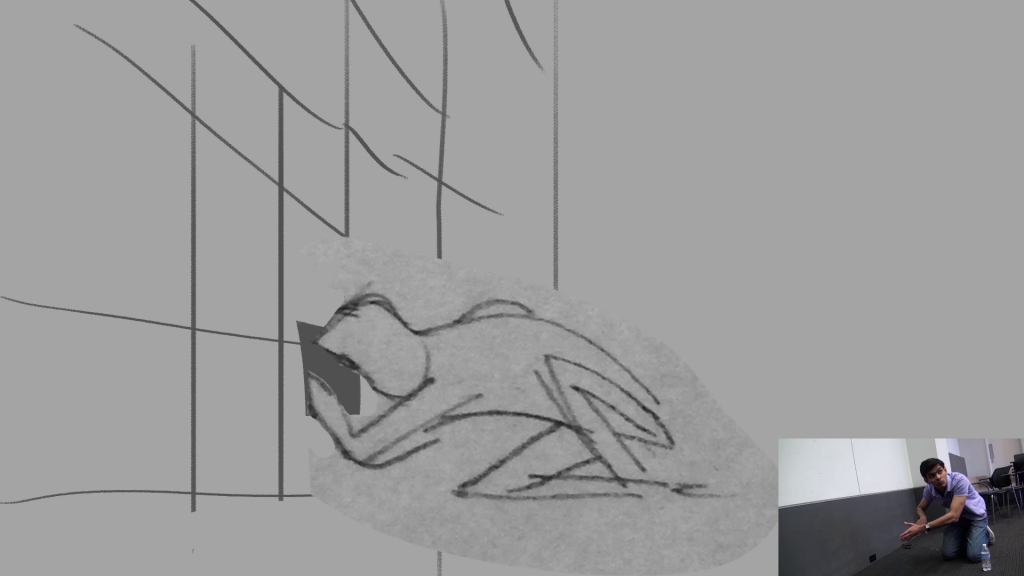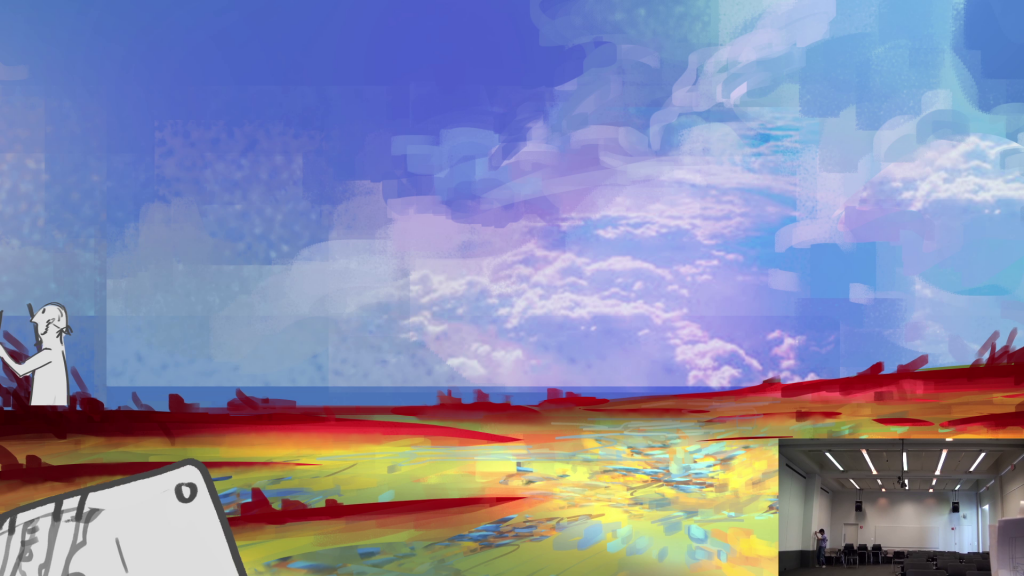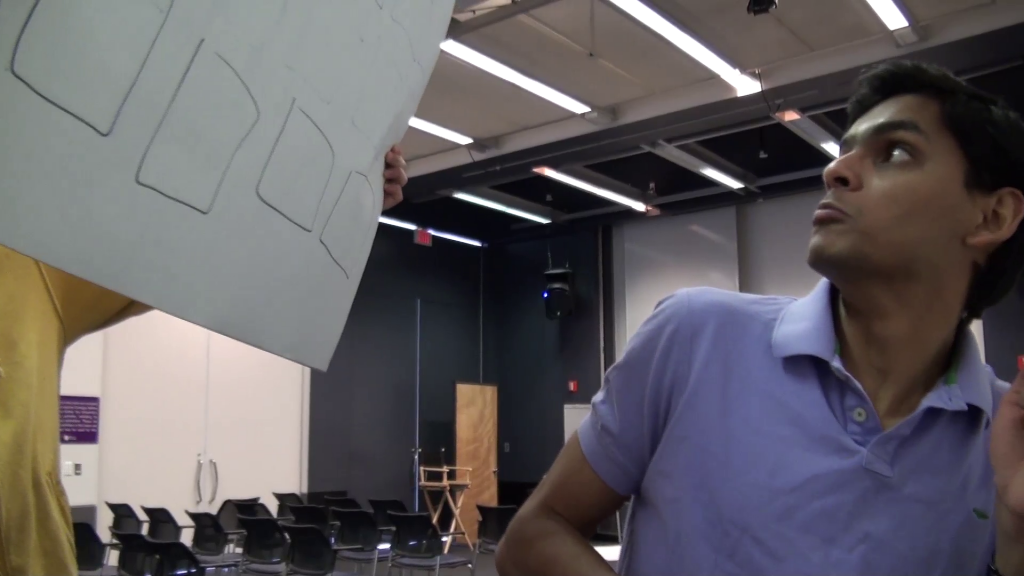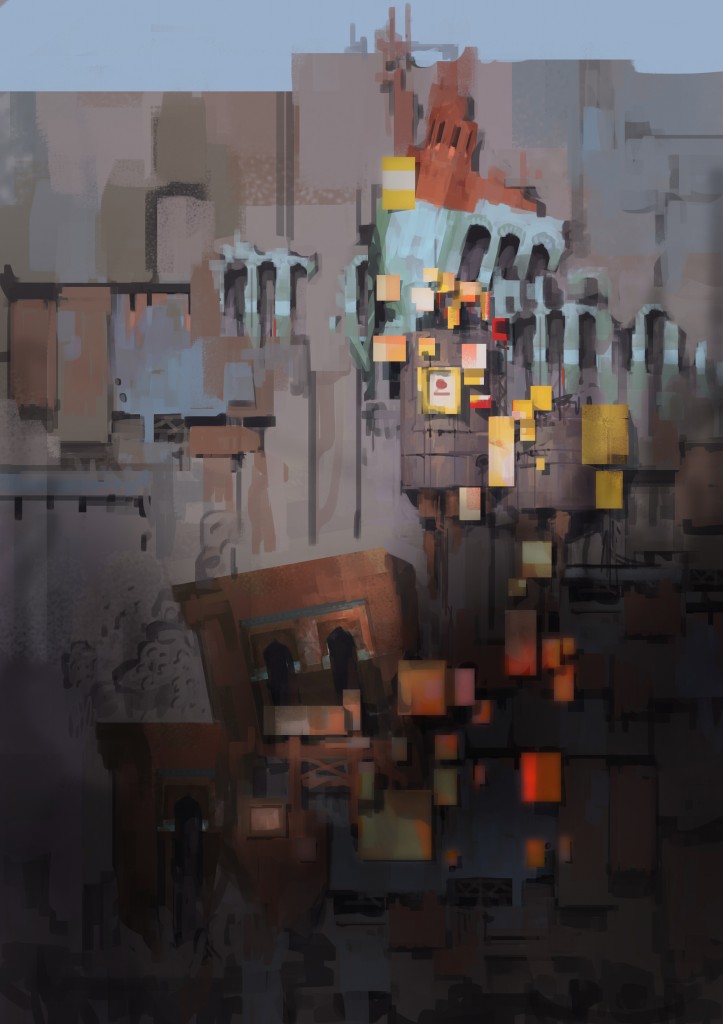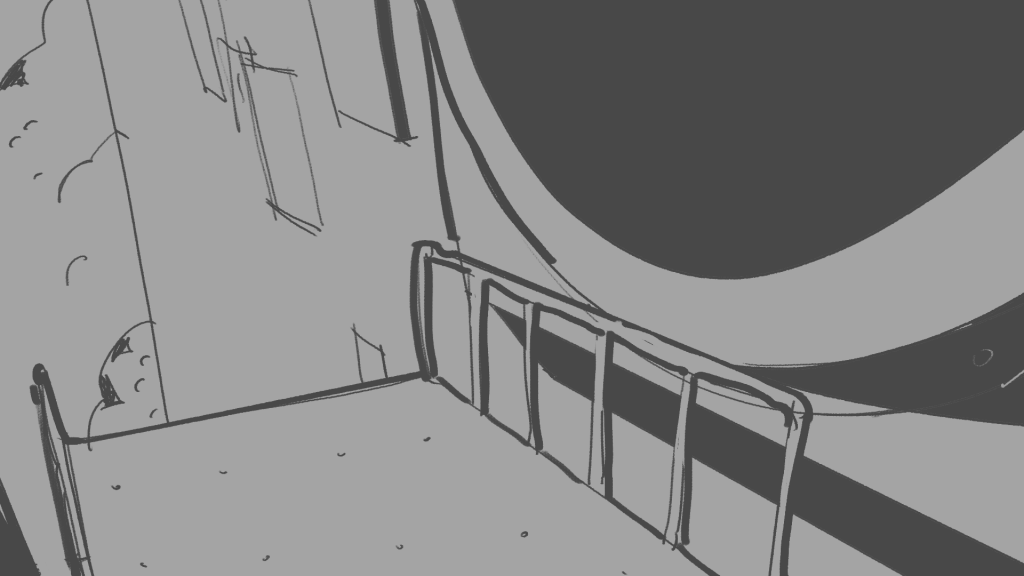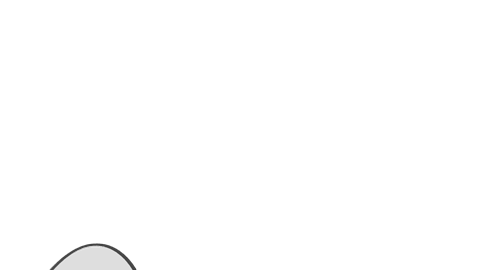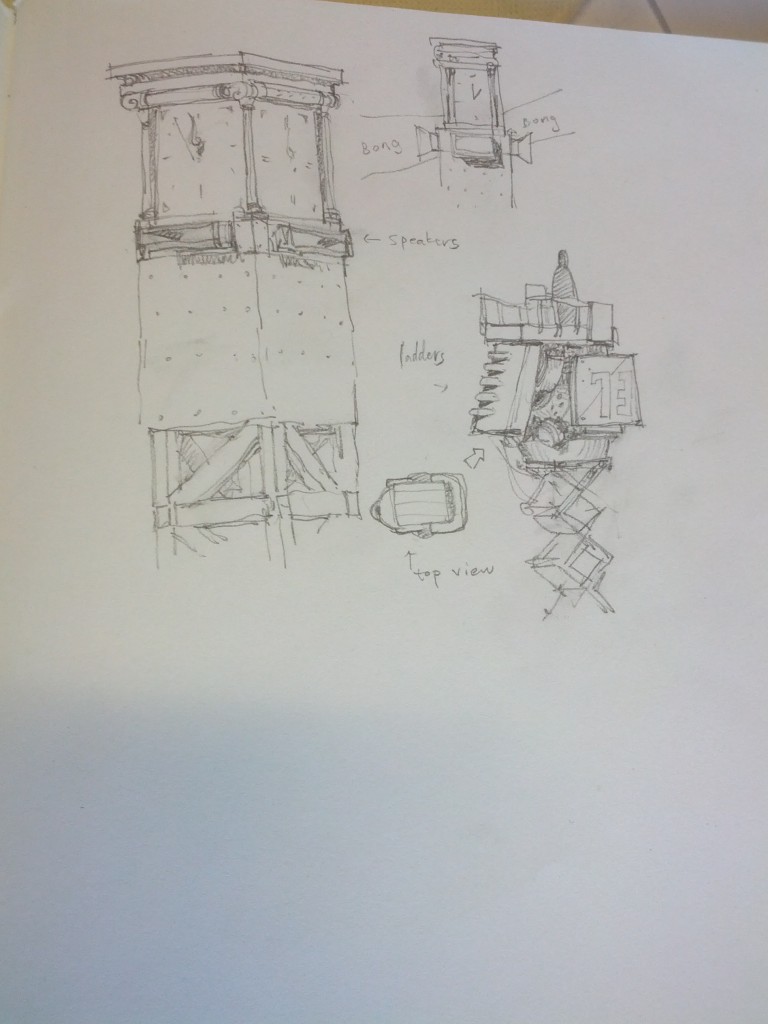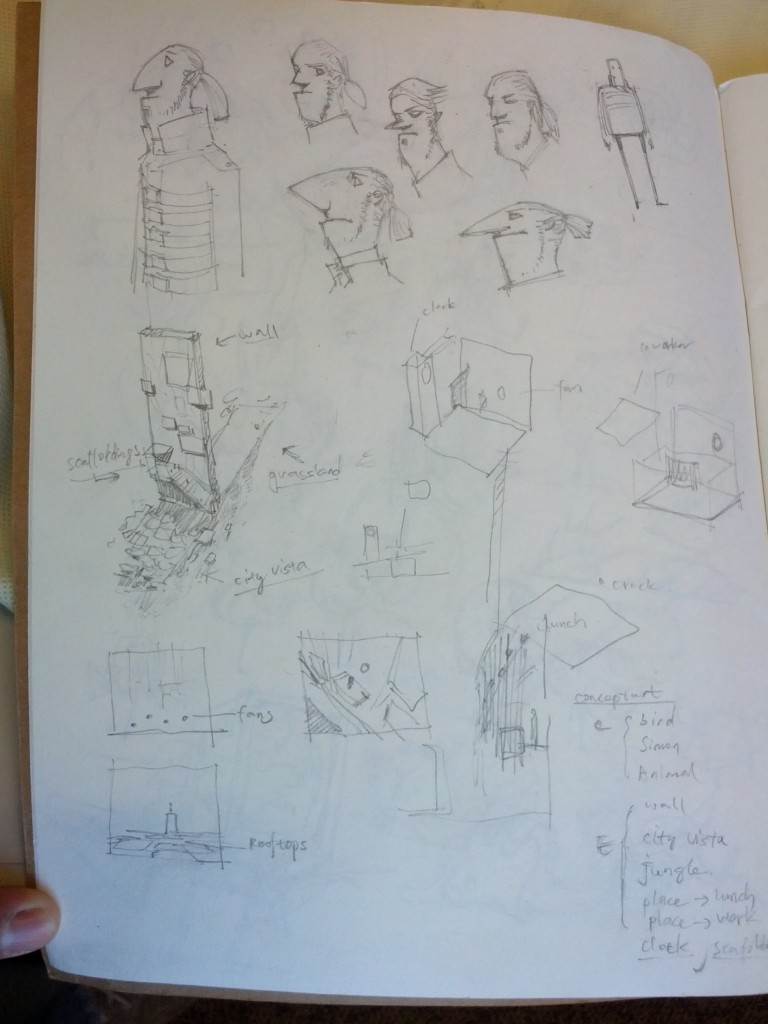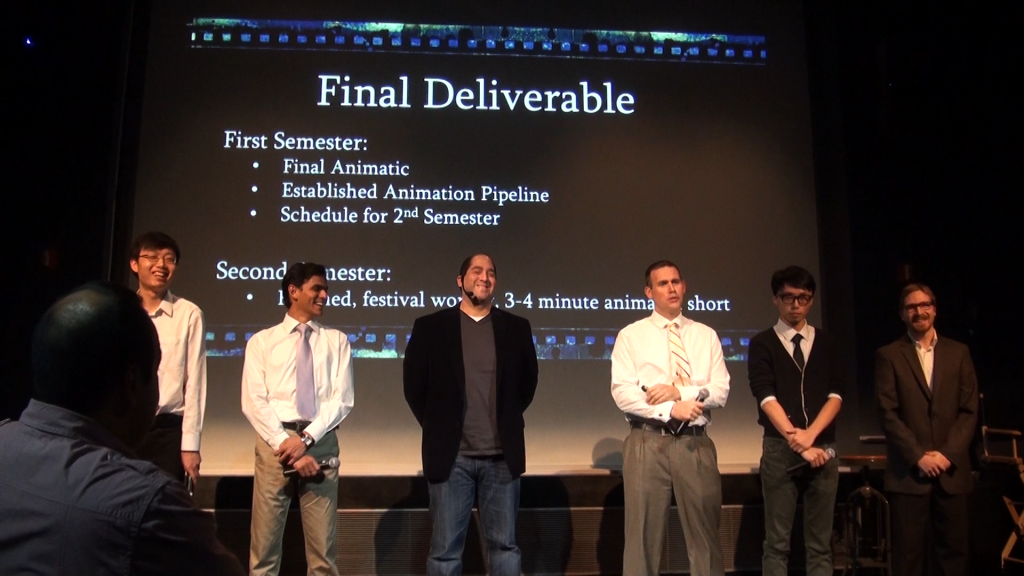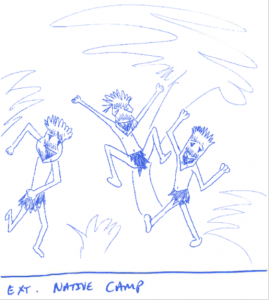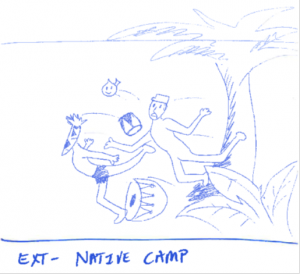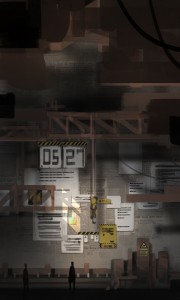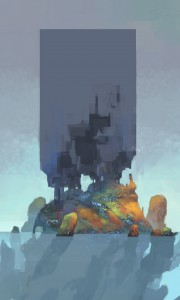We’ve spent a lot of time this week trying to refine our pipeline and experiment with technologies.
The challenge Chen, our compositor and head of pipeline, had was mainly how to setup a proper work flow with render farm. We had some hiccups early in the week with getting others on the team access to the render farm and teaching them how to use it, but there were also questions the head of Computer Support needed to answer for himself before our setup was complete. Chen also spent some time figuring out how to organize 3D animatic assets and find a better way to lay out those assets within each shot in the film..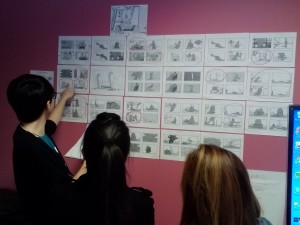
For our lead artist, Cewon, it’s been tough trying to estimate the workflow of this type of art because she’s never been through an animation pipeline like this before. During the BVW round 5, she made a hand-drawing of 3840×1080 pixels in two days, so she assumed a 1920×1080 rough background would take one day. But she soon realized that the quality of an animation background needs to be better than her work in BVW because she’s defining so many buildings in Ramesh’s city. She’s beginning to get accustomed to the type of workload needed for animation though and she’s well on her way to completing the background for the first test shot.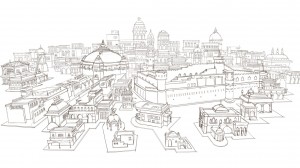
Sai, Chen and Paul finished the first portion of motion capture with the Organic Motion system here at the ETC. But, they found that Organic Motion does not do well when the subject has their limbs close to their body, and in one scene of the short, the lead character, Ramesh, is sitting and crawling on the ground. So, they visited the motion capture lab on the main campus and set up a time when they could capture the remaining scene with their more accurate system. Sai, Chen and Paul also discovered that the system on main campus can be used for facial capture. They will be making an appointment sometime soon to begin that process.
There are a few things on hold as we smooth out the modeling pipeline. As the team discovered when Sai started to run through the motion capture data, the way Ramesh was modeled does not make him conducive to animation–the way his shoulders moved made his arms collide with his body. This was not the fault of our talented modeler, Dorothy. She actually modeled the character perfectly from the model sheets, but we found that the 2D sheets didn’t translate well into the 3D realm. Dorothy is now working on fixes but unfortunately, Cewon’s texturing of the model is on hold until all that work is done.
Joel has continued to show his value by giving us a great model of the “creature.” But we also came across some hiccups when trying to translate the 2D concepts to the 3D realm. On a flat surface, the creature looks positively plausible in it’s shape and suggested motion, but in 3D is seemed a little off, so we’re now taking the model beyond the original concepts and tinkering with the way it moves and carries its weight.
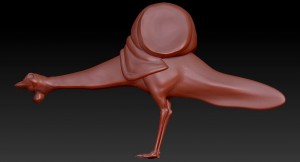
Julia created a 3d mockup of the scene Cewon is developing to help get the perspective of the shot correct. After three different people delivered three different perspectives on a single shot, the team found a need to find reference material and speak often to make sure everyone was seeing the shot in the same way. They have since laid out the shots Julia will be doing and they are meeting daily to look over the perspective and scale of everything in the shot.
Paul continues to bounce from desk to desk, working to keep the aesthetic of the piece cohesive while also keeping up with all the housekeeping of the project. As the sound designer, he delivered a locked soundtrack earlier in the week and will continue to revise it throughout the semester. But, the elements are now timed and the animators can therefore get started on moving the characters to the sounds on the animatic.
The team ended the week with a little break.
Having started the semester in full working mode, the team has had little time to get to know one another, so Paul ordered pizza and had everyone take an hour out of their schedule on Friday to have a little pie and play a rousing round of Pictionary.
